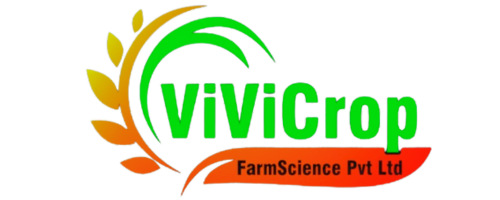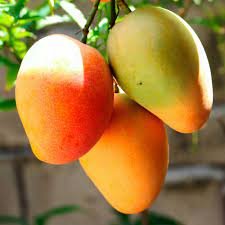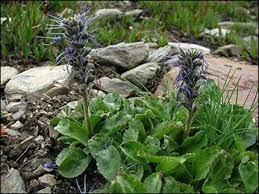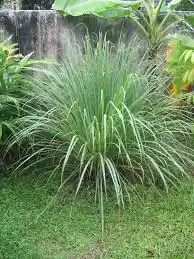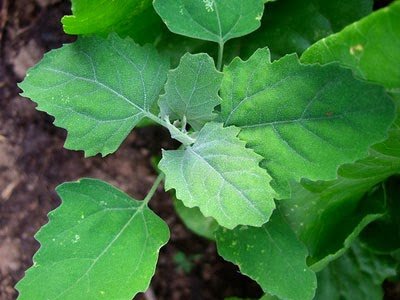Sarson ka Saag Nutrition Requirements
Nutrition required by Sarson ka Saag at each stage of its life cycle.
SOIL PREPARATION
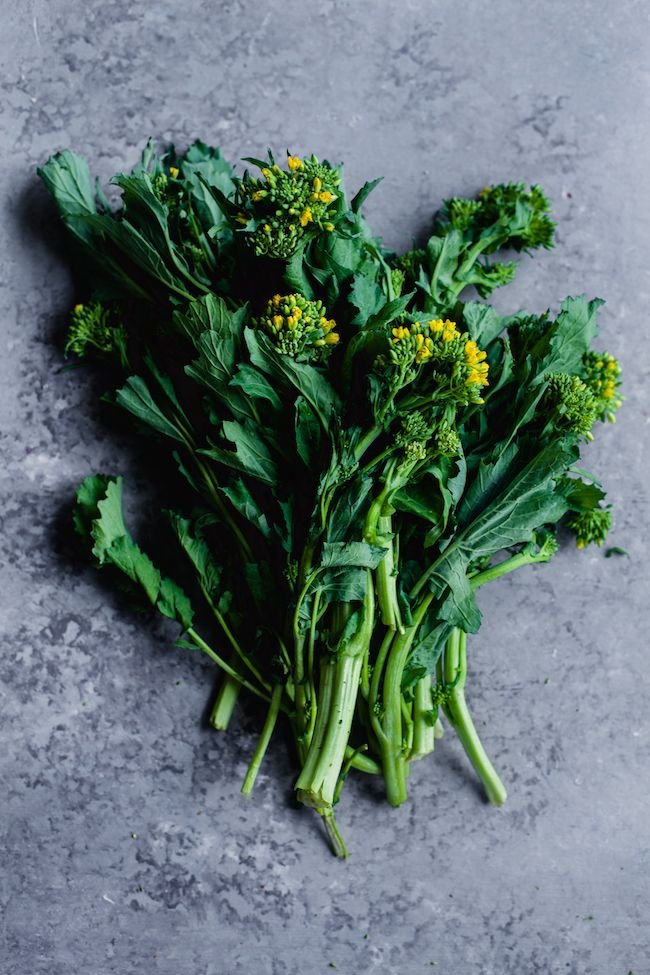
Soil Preparation
To prepare the soil for cultivating Sarson ka Saag (Brassica napus), commonly known as mustard greens, and to meet its nutrition requirements, you'll need to follow these steps:
### Soil Preparation Method:
1. **Site Selection**:
- Choose a well-drained area with full sun exposure for optimal growth.
- Ensure the soil pH is between 6.0 and 7.5, slightly acidic to neutral.
2. **Soil Testing**:
- Conduct a soil test to determine its nutrient levels, especially nitrogen, phosphorus, and potassium (N-P-K), and adjust accordingly.
3. **Soil Preparation**:
- Clear the area of weeds, rocks, and debris.
- Till the soil to a depth of 6 to 8 inches to loosen it and improve aeration.
- Incorporate organic matter such as compost or well-rotted manure to improve soil structure and fertility.
4. **Soil Amendments**:
- Based on the soil test results, amend the soil with appropriate fertilizers to meet the nutrient requirements of Sarson ka Saag.
- Incorporate balanced fertilizers or organic amendments rich in nitrogen, phosphorus, and potassium.
5. **Bed Preparation**:
- Create raised beds if drainage is a concern, especially in heavy clay soils.
- Ensure proper spacing between rows and plants for optimal growth and airflow.
### Nutrition Requirement:
Sarson ka Saag has specific nutritional requirements at the soil preparation stage, which can be achieved through soil amendments and fertilization:
1. **Nitrogen (N)**:
- Mustard greens require a significant amount of nitrogen for lush foliage growth.
- Incorporate nitrogen-rich fertilizers such as ammonium sulfate or urea to meet the plant's nitrogen needs.
2. **Phosphorus (P)**:
- Phosphorus is essential for root development and overall plant growth.
- Add phosphorus-rich fertilizers such as bone meal or rock phosphate to the soil to ensure adequate phosphorus levels.
3. **Potassium (K)**:
- Potassium contributes to disease resistance and overall plant vigor.
- Use potassium-rich fertilizers such as potassium sulfate or potassium chloride to supplement soil potassium levels.
4. **Micronutrients**:
- Sarson ka Saag may benefit from micronutrient supplementation, especially if soil test results indicate deficiencies.
- Incorporate micronutrient-rich amendments such as kelp meal or fish emulsion to provide essential trace elements.
5. **Organic Matter**:
- Organic matter such as compost or well-rotted manure provides a continuous supply of nutrients and improves soil structure.
- Incorporate a generous amount of organic matter into the soil during preparation to enhance fertility and microbial activity.
By following these soil preparation methods and providing the necessary nutrients, you can create an optimal growing environment for Sarson ka Saag, promoting healthy growth and abundant harvests. Regular monitoring of soil fertility and plant health is essential throughout the growing season to ensure optimal nutrient uptake and plant development.
Early Growth (Germination to Establishment)

Early Growth
During the early growth stage (germination to establishment) of Sarson ka Saag (Brassica napus), commonly known as mustard greens, the plants have specific nutritional requirements to support vigorous growth and establishment. Here are the key nutrients required during this stage:
1. **Nitrogen (N)**:
- Nitrogen is essential for promoting early vegetative growth, including leaf development and overall plant vigor.
- Apply nitrogen-rich fertilizers such as ammonium sulfate or urea to meet the initial nitrogen needs of the plants.
2. **Phosphorus (P)**:
- Phosphorus is crucial for root development and early establishment of Sarson ka Saag.
- Provide phosphorus through the application of phosphorus-rich fertilizers such as superphosphate or bone meal to support healthy root growth.
3. **Potassium (K)**:
- Potassium aids in overall plant health and enhances stress tolerance during the early growth stage.
- Apply potassium-rich fertilizers such as potassium sulfate or potassium chloride to ensure adequate potassium levels in the soil.
4. **Micronutrients**:
- Sarson ka Saag may require micronutrient supplementation during the early growth stage, especially if soil test results indicate deficiencies.
- Incorporate micronutrient-rich fertilizers or organic amendments containing essential trace elements such as boron, zinc, and manganese to address any deficiencies.
5. **Organic Matter**:
- Organic matter plays a vital role in providing a continuous supply of nutrients and improving soil structure during the early growth stage.
- Incorporate well-rotted compost or manure into the soil before planting to enhance soil fertility and support healthy plant establishment.
6. **Water**:
- Adequate moisture is crucial for seed germination and early seedling establishment.
- Ensure consistent soil moisture by watering the plants regularly, especially during dry periods, to promote healthy growth and development.
7. **pH Balance**:
- Maintain the soil pH within the optimal range of 6.0 to 7.5 for Sarson ka Saag growth and nutrient uptake.
- Adjust soil pH if necessary using lime to raise pH or elemental sulfur to lower pH, based on soil test recommendations.
By providing the necessary nutrients and maintaining optimal growing conditions during the early growth stage, you can support healthy germination, vigorous seedling establishment, and robust growth of Sarson ka Saag plants, leading to a successful harvest. Regular monitoring of plant health and nutrient levels is essential to ensure optimal growth and development throughout the growing season.
Tillering Stage (Shoot Development)

Tillering Stage
During the tillering stage (shoot development) of Sarson ka Saag (Brassica napus), also known as mustard greens, the plants have specific nutritional requirements to support healthy shoot development and foliage growth. Here are the key nutrients required during this stage:
1. **Nitrogen (N)**:
- Nitrogen is crucial for promoting vigorous vegetative growth, including tiller and leaf development.
- Apply nitrogen-rich fertilizers such as ammonium sulfate or urea to meet the increasing nitrogen demands of the plants during shoot development.
2. **Phosphorus (P)**:
- Phosphorus plays a vital role in promoting strong root development and supporting overall plant growth.
- Provide phosphorus through the application of phosphorus-rich fertilizers such as superphosphate or bone meal to ensure healthy shoot and root development.
3. **Potassium (K)**:
- Potassium is essential for enhancing plant vigor and improving stress tolerance during the tillering stage.
- Apply potassium-rich fertilizers such as potassium sulfate or potassium chloride to ensure adequate potassium levels in the soil, supporting robust shoot development.
4. **Micronutrients**:
- Sarson ka Saag may require micronutrient supplementation during the tillering stage, especially if soil test results indicate deficiencies.
- Incorporate micronutrient-rich fertilizers or organic amendments containing essential trace elements such as boron, zinc, and manganese to address any micronutrient deficiencies and support healthy shoot development.
5. **Organic Matter**:
- Organic matter plays a crucial role in providing a continuous supply of nutrients and improving soil structure during shoot development.
- Incorporate well-rotted compost or manure into the soil around the base of the plants to enhance soil fertility and support robust tiller growth.
6. **Water**:
- Adequate soil moisture is essential for promoting healthy shoot development and tiller formation.
- Ensure consistent soil moisture by watering the plants regularly, especially during dry periods, to support vigorous shoot growth and foliage development.
7. **pH Balance**:
- Maintain the soil pH within the optimal range of 6.0 to 7.5 for Sarson ka Saag growth and nutrient uptake during the tillering stage.
- Adjust soil pH if necessary using lime to raise pH or elemental sulfur to lower pH, based on soil test recommendations.
By providing the necessary nutrients and maintaining optimal growing conditions during the tillering stage, you can support healthy shoot development, robust foliage growth, and overall plant vigor in Sarson ka Saag plants, leading to a successful harvest. Regular monitoring of plant health and nutrient levels is essential to ensure optimal growth and development throughout the growing season.
Flowering

Flowering
During the flowering stage of Sarson ka Saag (Brassica napus), commonly known as mustard greens, the plants have specific nutritional requirements to support flowering, pollination, and seed development. Here are the key nutrients required during this stage:
1. **Potassium (K)**:
- Potassium plays a crucial role in promoting flower development and improving flower quality.
- Provide potassium-rich fertilizers such as potassium sulfate or potassium chloride to ensure adequate potassium levels in the soil, supporting healthy flower formation.
2. **Phosphorus (P)**:
- Phosphorus is essential for promoting flower bud formation and supporting overall reproductive development.
- Maintain phosphorus levels in the soil by applying phosphorus-rich fertilizers such as superphosphate or bone meal to support robust flowering.
3. **Calcium (Ca)**:
- Calcium is important for flower development and preventing disorders such as blossom end rot.
- Ensure adequate calcium levels in the soil by incorporating gypsum or calcium-rich fertilizers to support healthy flower formation and seed development.
4. **Magnesium (Mg)**:
- Magnesium is essential for chlorophyll synthesis and overall plant health during the flowering stage.
- Apply magnesium-rich fertilizers such as Epsom salt (magnesium sulfate) to ensure sufficient magnesium levels in the soil, supporting optimal flower development.
5. **Boron (B)**:
- Boron is crucial for pollen germination, flower formation, and seed development.
- Supplement the soil with boron through the application of boron-rich fertilizers or organic sources such as borax to support healthy flower development and seed set.
6. **Micronutrients**:
- Ensure the availability of essential micronutrients such as zinc, manganese, and copper during the flowering stage to support overall plant health and flower development.
- Incorporate micronutrient-rich fertilizers or organic amendments containing these trace elements to address any deficiencies and promote healthy flowering.
7. **Water**:
- Adequate soil moisture is essential for supporting flower development, pollination, and seed set during the flowering stage.
- Maintain consistent soil moisture levels by watering the plants regularly, especially during dry periods, to support healthy flower formation and seed development.
8. **pH Balance**:
- Maintain the soil pH within the optimal range of 6.0 to 7.5 for Sarson ka Saag growth and nutrient uptake during the flowering stage.
- Adjust soil pH if necessary using lime to raise pH or elemental sulfur to lower pH, based on soil test recommendations.
By providing the necessary nutrients and maintaining optimal growing conditions during the flowering stage, you can support healthy flower development, pollination, and seed set in Sarson ka Saag plants, leading to a successful harvest of tender greens. Regular monitoring of plant health and nutrient levels is essential to ensure optimal flowering and seed development throughout the growing season.
Matchuration & Ripening

Matchuration & Ripening
During the maturation and ripening stage of Sarson ka Saag (Brassica napus), commonly known as mustard greens, the plants have specific nutritional requirements to support seed development, maturation, and overall plant health. Here are the key nutrients required during this stage:
1. **Potassium (K)**:
- Potassium plays a crucial role in promoting seed development, maturation, and overall plant vigor during the maturation and ripening stage.
- Provide potassium-rich fertilizers such as potassium sulfate or potassium chloride to ensure adequate potassium levels in the soil, supporting healthy seed formation and ripening.
2. **Phosphorus (P)**:
- Phosphorus is essential for seed formation, maturation, and overall reproductive development during the maturation and ripening stage.
- Maintain phosphorus levels in the soil by applying phosphorus-rich fertilizers such as superphosphate or bone meal to support robust seed development and ripening.
3. **Calcium (Ca)**:
- Calcium is important for seed development, cell wall formation, and overall plant health during the maturation and ripening stage.
- Ensure adequate calcium levels in the soil by incorporating gypsum or calcium-rich fertilizers to support healthy seed maturation and plant vigor.
4. **Magnesium (Mg)**:
- Magnesium is essential for chlorophyll synthesis, seed development, and overall plant health during the maturation and ripening stage.
- Apply magnesium-rich fertilizers such as Epsom salt (magnesium sulfate) to ensure sufficient magnesium levels in the soil, supporting optimal seed development and ripening.
5. **Sulfur (S)**:
- Sulfur is important for seed development, protein synthesis, and overall plant growth during the maturation and ripening stage.
- Provide sulfur through the application of sulfur-rich fertilizers such as elemental sulfur or ammonium sulfate to ensure adequate sulfur levels in the soil, supporting healthy seed development and ripening.
6. **Micronutrients**:
- Ensure the availability of essential micronutrients such as zinc, manganese, and copper during the maturation and ripening stage to support overall plant health and seed development.
- Incorporate micronutrient-rich fertilizers or organic amendments containing these trace elements to address any deficiencies and promote healthy seed maturation and ripening.
7. **Water**:
- Adequate soil moisture is essential for supporting seed development, maturation, and ripening during the maturation and ripening stage.
- Maintain consistent soil moisture levels by watering the plants regularly, especially during dry periods, to support healthy seed maturation and ripening.
By providing the necessary nutrients and maintaining optimal growing conditions during the maturation and ripening stage, you can support healthy seed development, maturation, and overall plant vigor in Sarson ka Saag plants, leading to a successful harvest of mature seeds. Regular monitoring of plant health and nutrient levels is essential to ensure optimal seed maturation and ripening throughout the growing season.
Harvesting

Harvesting
During the harvesting stage of Sarson ka Saag (Brassica napus), it's essential to ensure that the plants have received proper nutrition throughout their growth cycle to support healthy foliage development. Additionally, certain practices can help optimize the harvesting process. Here are the nutrition requirements and procedures to follow at the harvesting stage for Sarson ka Saag plants:
1. **Nutrition Requirement**:
- While specific nutrient requirements may not be as critical during the harvesting stage, it's essential to maintain overall plant health through proper nutrition during the growth stages.
- Adequate levels of nitrogen, phosphorus, potassium, calcium, magnesium, and other essential nutrients throughout the growth cycle contribute to robust foliage development, which is crucial for a successful harvest.
2. **Harvesting Procedure**:
- Sarson ka Saag is typically harvested when the plants reach maturity and the leaves are tender and flavorful. The ideal time for harvesting is before the plants bolt (send up flower stalks) and the leaves become tough and bitter.
- To harvest Sarson ka Saag, use a sharp knife or garden scissors to cut the leaves from the plant at the base of the stem. Harvest only the outer leaves, allowing the inner leaves to continue growing for future harvests.
- Harvesting should be done early in the morning when the plants are well-hydrated, as this helps preserve the freshness and flavor of the leaves.
- After harvesting, rinse the leaves thoroughly under running water to remove any dirt or debris. Trim off any damaged or yellowing leaves before storing or using them.
- Store the harvested Sarson ka Saag leaves in a plastic bag or container in the refrigerator. They can be stored for a few days, but it's best to use them as soon as possible for the freshest flavor.
3. **Post-Harvest Care**:
- After harvesting, it's essential to continue providing the remaining plants in the garden with proper care, including adequate watering and maintaining soil fertility for future growth cycles.
- Remove any remaining flower stalks or bolting plants to prevent them from diverting energy away from foliage growth.
- Incorporate organic matter such as compost or well-rotted manure into the soil to replenish nutrients and improve soil structure for future plantings.
By following these nutrition requirements and harvesting procedures, you can ensure a successful harvest of Sarson ka Saag plants with tender, flavorful leaves for culinary use. Regular care and attention to plant health throughout the growth cycle contribute to high-quality foliage and overall garden productivity.
Sarson ka Saag Farming Economics
Get details of Profitability and cost estimate in growing Sarson ka Saag per acres of Land.
SOIL PREPARATION

Soil Preparation
Soil preparation is crucial for successful bottle gourd cultivation, as it lays the foundation for healthy plant growth and high yields. Here's a guide on the soil preparation method and nutrition requirements at the soil preparation stage for bottle gourd:
### Soil Preparation Method:
1. **Site Selection**:
- Choose a well-drained site with plenty of sunlight for planting bottle gourd. Avoid areas prone to waterlogging or flooding.
2. **Soil Testing**:
- Conduct a soil test to determine the pH and nutrient levels of the soil. Bottle gourd thrives in slightly acidic to neutral soil with a pH range of 6.0 to 7.0.
3. **Clearing and Tilling**:
- Clear the planting area of weeds, rocks, and debris. Use a tiller or hoe to break up the soil and create a fine, crumbly seedbed.
4. **Amendments**:
- Based on the soil test results, amend the soil with organic matter such as compost, well-rotted manure, or leaf mold to improve soil structure, fertility, and moisture retention.
5. **Fertilization**:
- Incorporate balanced fertilizers or organic fertilizers into the soil according to the recommended rates for bottle gourd cultivation. A general guideline is to apply 1 to 2 pounds of nitrogen, phosphorus, and potassium (NPK) fertilizer per 100 square feet of planting area.
6. **Bed Preparation**:
- Create raised beds or mounds to improve drainage and prevent waterlogging. Ensure that the beds are well-compacted and leveled for uniform planting and irrigation.
7. **Mulching**:
- Apply a layer of organic mulch such as straw, hay, or shredded leaves to the soil surface to suppress weed growth, conserve soil moisture, and regulate soil temperature.
8. **Final Bed Preparation**:
- Rake the soil surface to create a smooth, level planting bed. Make shallow furrows or planting holes spaced according to the recommended planting distance for bottle gourd.
### Nutrition Requirements:
During the soil preparation stage, bottle gourd has specific nutrition requirements to support healthy plant growth and development. Here are the key nutrients needed:
1. **Nitrogen (N)**:
- Nitrogen is essential for promoting vigorous vegetative growth and overall plant health. Incorporate nitrogen-rich fertilizers or organic amendments into the soil to provide a steady supply of nitrogen for bottle gourd plants.
2. **Phosphorus (P)**:
- Phosphorus is important for root development, flowering, and fruit set in bottle gourd plants. Apply phosphorus-rich fertilizers or bone meal to the soil to support strong root growth and overall plant vigor.
3. **Potassium (K)**:
- Potassium plays a crucial role in plant metabolism, water regulation, and fruit development. Ensure adequate potassium levels in the soil by applying potassium-rich fertilizers such as potassium sulfate or potassium chloride.
4. **Calcium (Ca)**:
- Calcium contributes to cell wall formation, fruit quality, and disease resistance in bottle gourd plants. Incorporate calcium sources such as gypsum or lime into the soil to prevent calcium-related disorders and support healthy plant growth.
5. **Magnesium (Mg)**:
- Magnesium is a component of chlorophyll and essential for photosynthesis and enzyme activation in bottle gourd plants. Ensure sufficient magnesium levels in the soil by applying magnesium sulfate (Epsom salt) or other magnesium-containing fertilizers.
6. **Micronutrients**:
- Micronutrients such as iron, manganese, zinc, copper, boron, and molybdenum are required in small amounts but are crucial for various physiological processes in bottle gourd plants. Monitor soil micronutrient levels and apply micronutrient fertilizers or foliar sprays as needed to prevent deficiencies.
By following these soil preparation methods and addressing the specific nutrition requirements of bottle gourd plants, you can create an optimal growing environment for healthy plant growth and high yields. Regular soil testing and monitoring of plant health will help ensure that nutrient requirements are met throughout the growing season.
Early Growth (Germination to Establishment)

Early Growth
During the early growth stage, from germination to establishment, bottle gourd plants have specific nutritional requirements to support vigorous vegetative growth and root development. Here are the key nutrients needed during this stage:
1. **Nitrogen (N)**:
- Nitrogen is essential for promoting early vegetative growth, including leaf and stem development. It is a crucial component of chlorophyll, the green pigment responsible for photosynthesis.
- Apply nitrogen-rich fertilizers or organic amendments to provide a steady supply of nitrogen to support healthy plant growth during the early stages.
2. **Phosphorus (P)**:
- Phosphorus plays a vital role in root development, energy transfer, and overall plant metabolism. Adequate phosphorus levels are crucial for establishing a strong root system, which enables the plant to absorb water and nutrients efficiently.
- Incorporate phosphorus-rich fertilizers or bone meal into the soil to support root growth and early plant establishment.
3. **Potassium (K)**:
- Potassium is important for promoting overall plant vigor, water regulation, and disease resistance. It helps plants withstand environmental stress and promotes balanced growth.
- Apply potassium-rich fertilizers such as potassium sulfate or potassium chloride to ensure an adequate supply of potassium for early growth and establishment.
4. **Calcium (Ca)**:
- Calcium is essential for cell wall formation, structural integrity, and disease resistance in bottle gourd plants. Adequate calcium levels are crucial for preventing disorders such as blossom end rot.
- Incorporate calcium sources such as gypsum or lime into the soil to provide sufficient calcium for early plant growth and development.
5. **Magnesium (Mg)**:
- Magnesium is a component of chlorophyll and essential for photosynthesis, enzyme activation, and overall plant metabolism. It plays a vital role in energy transfer and nutrient uptake.
- Ensure sufficient magnesium levels in the soil by applying magnesium sulfate (Epsom salt) or other magnesium-containing fertilizers to support early growth and establishment.
6. **Micronutrients**:
- Micronutrients such as iron, manganese, zinc, copper, boron, and molybdenum are required in small amounts but are crucial for various physiological processes during early plant growth.
- Monitor soil micronutrient levels and provide micronutrient fertilizers or foliar sprays as needed to prevent deficiencies and promote healthy plant growth.
By providing the appropriate balance of these nutrients during the early growth stage, you can support vigorous vegetative growth, strong root development, and overall plant health in bottle gourd plants. Regular soil testing and monitoring of plant health will help ensure that nutrient requirements are met throughout the growing season.
Tillering Stage (Shoot Development)

Tillering Stage
Soil preparation is a crucial step in wheat cultivation, as it directly affects the crop's growth and yield. Here are the soil preparation methods and nutrition requirements at the soil preparation stage for wheat:
Soil Preparation Method:
Land Preparation: Plow the field to break the soil and turn it over. Use a disc harrow or cultivator to further break down clods and level the soil. Ensure proper seedbed preparation by creating a fine, well-tilled soil surface.
Seedbed Preparation: Level the field to provide a uniform surface for planting. Use a roller or a harrow to firm up the soil to facilitate seed-to-soil contact. Remove any weeds or crop residues from the previous season to reduce competition with the wheat crop.
Seed Rate and Sowing: Determine the appropriate seed rate based on the variety and local recommendations. Use a suitable seed drill for uniform and precise sowing. Ensure proper seed depth according to recommended guidelines.
Fertilization: Apply a balanced fertilizer based on soil nutrient analysis and regional recommendations. Incorporate fertilizers into the soil during seedbed preparation. Consider applying phosphorus and potassium along with nitrogen for optimal wheat growth.
Organic Matter: Incorporate well-rotted organic matter, such as compost or manure, into the soil. Organic matter enhances soil structure, water retention, and nutrient availability.
pH Adjustment: Check and adjust soil pH to the recommended range for wheat cultivation (typically around 6.0 to 7.5). Lime may be added to raise pH, and sulfur may be added to lower pH as needed.
Nutrition Requirement at Soil Preparation Stage: Nitrogen (N): Nitrogen is essential for vegetative growth and is crucial during the early stages of wheat development. Apply nitrogen fertilizer during soil preparation to provide an initial boost to the crop.
Phosphorus (P): Phosphorus is vital for root development and early plant establishment. Apply phosphorus-containing fertilizers, such as diammonium phosphate (DAP), during soil preparation.
Potassium (K): Potassium supports overall plant health, disease resistance, and drought tolerance. Apply potassium-containing fertilizers, such as potassium chloride (Muriate of Potash), during soil preparation.
Micronutrients: Consider incorporating micronutrients like zinc, copper, and boron based on soil testing results. Micronutrients play essential roles in enzyme activities and overall plant health.
Organic Matter: Organic matter contributes to nutrient availability and improves the soil's water-holding capacity. Ensure a good supply of organic matter through the incorporation of well-decomposed compost or manure.
Soil pH: Adjust soil pH to the recommended range for wheat cultivation to optimize nutrient uptake by the plants.
Microbial Activity: Encourage beneficial microbial activity in the soil by incorporating organic matter. Healthy soil microbial communities contribute to nutrient cycling and availability.
Water Management: Ensure proper drainage to prevent waterlogging, which can negatively impact nutrient uptake. Irrigate if necessary to maintain adequate soil moisture during wheat establishment.
Flowering

Flowering
Soil preparation is a crucial step in wheat cultivation, as it directly affects the crop's growth and yield. Here are the soil preparation methods and nutrition requirements at the soil preparation stage for wheat:
Soil Preparation Method:
Land Preparation: Plow the field to break the soil and turn it over. Use a disc harrow or cultivator to further break down clods and level the soil. Ensure proper seedbed preparation by creating a fine, well-tilled soil surface.
Seedbed Preparation: Level the field to provide a uniform surface for planting. Use a roller or a harrow to firm up the soil to facilitate seed-to-soil contact. Remove any weeds or crop residues from the previous season to reduce competition with the wheat crop.
Seed Rate and Sowing: Determine the appropriate seed rate based on the variety and local recommendations. Use a suitable seed drill for uniform and precise sowing. Ensure proper seed depth according to recommended guidelines.
Fertilization: Apply a balanced fertilizer based on soil nutrient analysis and regional recommendations. Incorporate fertilizers into the soil during seedbed preparation. Consider applying phosphorus and potassium along with nitrogen for optimal wheat growth.
Organic Matter: Incorporate well-rotted organic matter, such as compost or manure, into the soil. Organic matter enhances soil structure, water retention, and nutrient availability.
pH Adjustment: Check and adjust soil pH to the recommended range for wheat cultivation (typically around 6.0 to 7.5). Lime may be added to raise pH, and sulfur may be added to lower pH as needed.
Nutrition Requirement at Soil Preparation Stage: Nitrogen (N): Nitrogen is essential for vegetative growth and is crucial during the early stages of wheat development. Apply nitrogen fertilizer during soil preparation to provide an initial boost to the crop.
Phosphorus (P): Phosphorus is vital for root development and early plant establishment. Apply phosphorus-containing fertilizers, such as diammonium phosphate (DAP), during soil preparation.
Potassium (K): Potassium supports overall plant health, disease resistance, and drought tolerance. Apply potassium-containing fertilizers, such as potassium chloride (Muriate of Potash), during soil preparation.
Micronutrients: Consider incorporating micronutrients like zinc, copper, and boron based on soil testing results. Micronutrients play essential roles in enzyme activities and overall plant health.
Organic Matter: Organic matter contributes to nutrient availability and improves the soil's water-holding capacity. Ensure a good supply of organic matter through the incorporation of well-decomposed compost or manure.
Soil pH: Adjust soil pH to the recommended range for wheat cultivation to optimize nutrient uptake by the plants.
Microbial Activity: Encourage beneficial microbial activity in the soil by incorporating organic matter. Healthy soil microbial communities contribute to nutrient cycling and availability.
Water Management: Ensure proper drainage to prevent waterlogging, which can negatively impact nutrient uptake. Irrigate if necessary to maintain adequate soil moisture during wheat establishment.
Matchuration & Ripening

Matchuration & Ripening
Soil preparation is a crucial step in wheat cultivation, as it directly affects the crop's growth and yield. Here are the soil preparation methods and nutrition requirements at the soil preparation stage for wheat:
Soil Preparation Method:
Land Preparation: Plow the field to break the soil and turn it over. Use a disc harrow or cultivator to further break down clods and level the soil. Ensure proper seedbed preparation by creating a fine, well-tilled soil surface.
Seedbed Preparation: Level the field to provide a uniform surface for planting. Use a roller or a harrow to firm up the soil to facilitate seed-to-soil contact. Remove any weeds or crop residues from the previous season to reduce competition with the wheat crop.
Seed Rate and Sowing: Determine the appropriate seed rate based on the variety and local recommendations. Use a suitable seed drill for uniform and precise sowing. Ensure proper seed depth according to recommended guidelines.
Fertilization: Apply a balanced fertilizer based on soil nutrient analysis and regional recommendations. Incorporate fertilizers into the soil during seedbed preparation. Consider applying phosphorus and potassium along with nitrogen for optimal wheat growth.
Organic Matter: Incorporate well-rotted organic matter, such as compost or manure, into the soil. Organic matter enhances soil structure, water retention, and nutrient availability.
pH Adjustment: Check and adjust soil pH to the recommended range for wheat cultivation (typically around 6.0 to 7.5). Lime may be added to raise pH, and sulfur may be added to lower pH as needed.
Nutrition Requirement at Soil Preparation Stage: Nitrogen (N): Nitrogen is essential for vegetative growth and is crucial during the early stages of wheat development. Apply nitrogen fertilizer during soil preparation to provide an initial boost to the crop.
Phosphorus (P): Phosphorus is vital for root development and early plant establishment. Apply phosphorus-containing fertilizers, such as diammonium phosphate (DAP), during soil preparation.
Potassium (K): Potassium supports overall plant health, disease resistance, and drought tolerance. Apply potassium-containing fertilizers, such as potassium chloride (Muriate of Potash), during soil preparation.
Micronutrients: Consider incorporating micronutrients like zinc, copper, and boron based on soil testing results. Micronutrients play essential roles in enzyme activities and overall plant health.
Organic Matter: Organic matter contributes to nutrient availability and improves the soil's water-holding capacity. Ensure a good supply of organic matter through the incorporation of well-decomposed compost or manure.
Soil pH: Adjust soil pH to the recommended range for wheat cultivation to optimize nutrient uptake by the plants.
Microbial Activity: Encourage beneficial microbial activity in the soil by incorporating organic matter. Healthy soil microbial communities contribute to nutrient cycling and availability.
Water Management: Ensure proper drainage to prevent waterlogging, which can negatively impact nutrient uptake. Irrigate if necessary to maintain adequate soil moisture during wheat establishment.
Harvesting

Harvesting
Soil preparation is a crucial step in wheat cultivation, as it directly affects the crop's growth and yield. Here are the soil preparation methods and nutrition requirements at the soil preparation stage for wheat:
Soil Preparation Method:
Land Preparation: Plow the field to break the soil and turn it over. Use a disc harrow or cultivator to further break down clods and level the soil. Ensure proper seedbed preparation by creating a fine, well-tilled soil surface.
Seedbed Preparation: Level the field to provide a uniform surface for planting. Use a roller or a harrow to firm up the soil to facilitate seed-to-soil contact. Remove any weeds or crop residues from the previous season to reduce competition with the wheat crop.
Seed Rate and Sowing: Determine the appropriate seed rate based on the variety and local recommendations. Use a suitable seed drill for uniform and precise sowing. Ensure proper seed depth according to recommended guidelines.
Fertilization: Apply a balanced fertilizer based on soil nutrient analysis and regional recommendations. Incorporate fertilizers into the soil during seedbed preparation. Consider applying phosphorus and potassium along with nitrogen for optimal wheat growth.
Organic Matter: Incorporate well-rotted organic matter, such as compost or manure, into the soil. Organic matter enhances soil structure, water retention, and nutrient availability.
pH Adjustment: Check and adjust soil pH to the recommended range for wheat cultivation (typically around 6.0 to 7.5). Lime may be added to raise pH, and sulfur may be added to lower pH as needed.
Nutrition Requirement at Soil Preparation Stage: Nitrogen (N): Nitrogen is essential for vegetative growth and is crucial during the early stages of wheat development. Apply nitrogen fertilizer during soil preparation to provide an initial boost to the crop.
Phosphorus (P): Phosphorus is vital for root development and early plant establishment. Apply phosphorus-containing fertilizers, such as diammonium phosphate (DAP), during soil preparation.
Potassium (K): Potassium supports overall plant health, disease resistance, and drought tolerance. Apply potassium-containing fertilizers, such as potassium chloride (Muriate of Potash), during soil preparation.
Micronutrients: Consider incorporating micronutrients like zinc, copper, and boron based on soil testing results. Micronutrients play essential roles in enzyme activities and overall plant health.
Organic Matter: Organic matter contributes to nutrient availability and improves the soil's water-holding capacity. Ensure a good supply of organic matter through the incorporation of well-decomposed compost or manure.
Soil pH: Adjust soil pH to the recommended range for wheat cultivation to optimize nutrient uptake by the plants.
Microbial Activity: Encourage beneficial microbial activity in the soil by incorporating organic matter. Healthy soil microbial communities contribute to nutrient cycling and availability.
Water Management: Ensure proper drainage to prevent waterlogging, which can negatively impact nutrient uptake. Irrigate if necessary to maintain adequate soil moisture during wheat establishment.
Sarson ka Saag Disease Details
Nutrition required by Sarson ka Saag at each stage of its life cycle.
SOIL PREPARATION

Soil Preparation
During the soil preparation stage for Sarson ka Saag (Brassica napus), various diseases and pests can affect the plants if proper precautions are not taken. Some common issues include:
1. **Damping-off**:
- Damping-off is a fungal disease that affects seedlings, causing them to rot at the base and eventually collapse.
- Precautions: Use well-draining soil and sterilized planting trays or pots to prevent fungal infections. Avoid overwatering and maintain proper air circulation to reduce humidity levels.
2. **Soilborne Diseases**:
- Soilborne pathogens such as Pythium, Rhizoctonia, and Fusarium can infect the roots and lower stems, causing damping-off, root rot, and wilting.
- Precautions: Rotate crops to prevent the buildup of soilborne pathogens. Practice good sanitation by removing crop debris and disinfecting gardening tools. Use disease-resistant varieties if available.
3. **Weed Competition**:
- Weeds compete with Sarson ka Saag for nutrients, water, and sunlight, reducing plant vigor and yield.
- Precautions: Remove weeds from the planting area before sowing seeds or transplanting seedlings. Mulch the soil to suppress weed growth and conserve soil moisture.
4. **Pest Infestations**:
- Pests such as cutworms, wireworms, and root maggots can damage Sarson ka Saag seedlings by feeding on roots or foliage.
- Precautions: Use physical barriers such as row covers to protect seedlings from pests. Monitor plants regularly for signs of pest infestations and take appropriate measures such as handpicking or using organic pest control methods.
5. **Nutrient Deficiencies**:
- Nutrient deficiencies in the soil can affect plant growth and development, making Sarson ka Saag more susceptible to diseases and pests.
- Precautions: Conduct a soil test before planting to determine nutrient levels and adjust soil fertility as needed. Incorporate organic matter such as compost to improve soil structure and nutrient availability.
6. **Poor Drainage**:
- Excessively wet or poorly drained soil can lead to root rot and other fungal diseases in Sarson ka Saag.
- Precautions: Ensure proper soil drainage by amending heavy clay soils with organic matter and avoiding planting in low-lying areas prone to waterlogging.
By taking these precautions during the soil preparation stage, you can help prevent diseases and pests from affecting Sarson ka Saag plants, ensuring healthy growth and a successful harvest. Regular monitoring and timely intervention are key to addressing any issues that may arise during the growing season.
Early Growth (Germination to Establishment)

Early Growing
During the early growth stage (germination to establishment) of Sarson ka Saag (Brassica napus), several diseases and pests can affect the plants if proper precautions are not taken. Here are some common issues and preventive measures:
1. **Damping-off**:
- Damping-off is a fungal disease that affects seedlings, causing them to rot at the base and collapse.
- Precautions: Use well-draining soil and sterilized planting trays or pots. Avoid overwatering and maintain proper air circulation to reduce humidity levels. Apply fungicides if necessary.
2. **Cabbage Root Maggot**:
- Cabbage root maggots are larvae of flies that feed on the roots of young seedlings, leading to wilting and stunted growth.
- Precautions: Use row covers to protect seedlings from adult flies. Apply beneficial nematodes or insecticides labeled for cabbage root maggot control.
3. **Flea Beetles**:
- Flea beetles are small, jumping insects that feed on young seedlings, causing small holes in the leaves and stunted growth.
- Precautions: Use row covers to protect seedlings from flea beetles. Apply insecticides labeled for flea beetle control, or use organic methods such as neem oil or kaolin clay.
4. **Clubroot**:
- Clubroot is a soilborne disease caused by a fungus that infects the roots of brassica plants, including Sarson ka Saag, leading to swollen and deformed roots.
- Precautions: Plant resistant varieties if available. Practice crop rotation and avoid planting in areas where clubroot has been a problem in the past. Improve soil drainage and pH levels to discourage the fungus.
5. **Seedling Diseases**:
- Various seedling diseases caused by fungi such as Pythium and Rhizoctonia can affect the early growth of Sarson ka Saag.
- Precautions: Use disease-free seeds and sterilized planting trays or pots. Avoid overwatering and ensure proper soil drainage. Apply fungicides if necessary.
6. **Nutrient Deficiencies**:
- Nutrient deficiencies, particularly nitrogen, phosphorus, and potassium, can affect the early growth of Sarson ka Saag.
- Precautions: Conduct a soil test before planting to determine nutrient levels. Amend the soil with organic matter and balanced fertilizers as needed to provide adequate nutrition for healthy growth.
By implementing these preventive measures, you can reduce the risk of diseases and pests affecting Sarson ka Saag during the early growth stage, promoting healthy establishment and vigorous growth of the plants. Regular monitoring and timely intervention are essential for addressing any issues that may arise.
Tillering Stage (Shoot Development)

Tillering Stage
During the tillering stage (shoot development) of Sarson ka Saag (Brassica napus), several diseases and pests can affect the plants if proper precautions are not taken. Here are some common issues and preventive measures:
1. **Downy Mildew**:
- Downy mildew is a fungal disease that causes yellow or pale green patches on leaves, along with fuzzy gray or white growth on the undersides.
- Precautions: Provide adequate spacing between plants to improve air circulation. Avoid overhead watering to reduce leaf moisture. Apply fungicides labeled for downy mildew control preventively.
2. **Aphids**:
- Aphids are small, soft-bodied insects that feed on plant sap, causing distorted growth, yellowing leaves, and the presence of sticky honeydew.
- Precautions: Monitor plants regularly for aphid infestations. Use insecticidal soap, neem oil, or insecticides labeled for aphid control. Encourage natural predators like ladybugs and lacewings.
3. **Cabbage Loopers**:
- Cabbage loopers are green caterpillars that feed on leaves, creating irregular holes and causing defoliation.
- Precautions: Handpick caterpillars from plants if feasible. Apply Bacillus thuringiensis (Bt) or spinosad-based insecticides labeled for caterpillar control.
4. **White Rust**:
- White rust is a fungal disease that appears as white or yellowish pustules on the undersides of leaves, leading to leaf yellowing and distortion.
- Precautions: Practice crop rotation to prevent the buildup of white rust spores. Avoid overhead watering and overcrowding of plants. Apply fungicides labeled for white rust control preventively.
5. **Flea Beetles**:
- Flea beetles are small, jumping insects that feed on leaves, causing small holes and damage to plant tissue.
- Precautions: Use row covers to protect plants from flea beetle damage. Apply insecticides labeled for flea beetle control, or use organic methods such as neem oil or kaolin clay.
6. **Clubroot**:
- Clubroot is a soilborne disease caused by a fungus that infects the roots, leading to swelling and deformation.
- Precautions: Plant resistant varieties if available. Practice crop rotation and avoid planting in areas where clubroot has been a problem. Improve soil drainage and pH levels.
By implementing these preventive measures, you can reduce the risk of diseases and pests affecting Sarson ka Saag during the tillering stage, promoting healthy shoot development and overall plant vigor. Regular monitoring and timely intervention are essential for addressing any issues that may arise.
Flowering

Flowering
During the flowering stage of Sarson ka Saag (Brassica napus), several diseases and pests can affect the plants if proper precautions are not taken. Here are some common issues and preventive measures:
1. **Alternaria Leaf Spot**:
- Alternaria leaf spot is a fungal disease that causes circular, dark brown or black spots with yellow halos on leaves. It can lead to defoliation if severe.
- Precautions: Provide adequate spacing between plants to improve air circulation. Avoid overhead watering to reduce leaf moisture. Apply fungicides labeled for Alternaria control preventively.
2. **Diamondback Moth**:
- Diamondback moth larvae feed on leaves, creating irregular holes and causing defoliation. Adults are small, grayish-brown moths.
- Precautions: Monitor plants regularly for diamondback moth larvae. Apply Bacillus thuringiensis (Bt) or spinosad-based insecticides labeled for caterpillar control. Encourage natural predators like parasitic wasps.
3. **Powdery Mildew**:
- Powdery mildew appears as white, powdery spots on leaves and stems, reducing photosynthesis and weakening the plant.
- Precautions: Provide adequate spacing between plants to improve air circulation. Avoid overhead watering and reduce humidity levels. Apply fungicides labeled for powdery mildew control preventively.
4. **Whitefly Infestation**:
- Whiteflies are small, white insects that feed on the undersides of leaves, sucking plant sap and causing yellowing, wilting, and the transmission of viral diseases.
- Precautions: Monitor plants regularly for whitefly infestations. Use insecticidal soap, neem oil, or insecticides labeled for whitefly control. Encourage natural predators like ladybugs and lacewings.
5. **Sclerotinia Rot**:
- Sclerotinia rot is a fungal disease that affects flowers and stems, causing soft, watery lesions and eventual rotting.
- Precautions: Avoid overhead watering and excessive irrigation, as wet conditions promote fungal growth. Remove and destroy affected plant parts promptly. Apply fungicides labeled for Sclerotinia control preventively.
6. **Cabbage Aphids**:
- Cabbage aphids feed on plant sap, causing yellowing, stunted growth, and the secretion of sticky honeydew.
- Precautions: Monitor plants regularly for aphid infestations. Use insecticidal soap, neem oil, or insecticides labeled for aphid control. Encourage natural predators like ladybugs and lacewings.
By implementing these preventive measures, you can reduce the risk of diseases and pests affecting Sarson ka Saag during the flowering stage, promoting healthy flower development and overall plant vigor. Regular monitoring and timely intervention are essential for addressing any issues that may arise.
Matchuration & Ripening

Matchuration & Ripening
During the maturation and ripening stage of Sarson ka Saag (Brassica napus), several diseases and pests can affect the plants if proper precautions are not taken. Here are some common issues and preventive measures:
1. **Blackleg**:
- Blackleg is a fungal disease that affects the stems of brassica plants, including Sarson ka Saag, causing dark, sunken lesions and eventual plant collapse.
- Precautions: Practice crop rotation and avoid planting in areas with a history of blackleg. Plant resistant varieties if available. Apply fungicides labeled for blackleg control preventively.
2. **Seed Pod Borers**:
- Seed pod borers are caterpillars that feed on developing seed pods, causing damage and reducing seed production.
- Precautions: Monitor plants regularly for signs of seed pod borer damage. Handpick caterpillars if feasible. Apply Bacillus thuringiensis (Bt) or spinosad-based insecticides labeled for caterpillar control.
3. **White Rust**:
- White rust is a fungal disease that appears as white or yellowish pustules on the undersides of leaves and can affect the maturation of seed pods.
- Precautions: Practice crop rotation to prevent the buildup of white rust spores. Avoid overhead watering and overcrowding of plants. Apply fungicides labeled for white rust control preventively.
4. **Harvesting Pests**:
- During the maturation and ripening stage, pests such as cabbage aphids and whiteflies may continue to feed on plant tissues and affect seed pod quality.
- Precautions: Continue monitoring plants for aphid and whitefly infestations. Use insecticidal soap, neem oil, or insecticides labeled for aphid and whitefly control. Encourage natural predators like ladybugs and lacewings.
5. **Botrytis Rot**:
- Botrytis rot, or gray mold, can affect mature seed pods, causing grayish-brown lesions and decay.
- Precautions: Remove and destroy infected seed pods promptly. Avoid overhead watering and excess moisture around seed pods. Apply fungicides labeled for botrytis control preventively.
By implementing these preventive measures, you can reduce the risk of diseases and pests affecting Sarson ka Saag during the maturation and ripening stage, ensuring healthy seed pod development and quality. Regular monitoring and timely intervention are essential for addressing any issues that may arise.
Harvesting

Harvesting
During the harvesting stage of Sarson ka Saag (Brassica napus), several diseases and pests can affect the plants if proper precautions are not taken. Here are some common issues and preventive measures:
1. **Stem Diseases**:
- Stem diseases like blackleg or stem rot can still affect plants at the harvesting stage, leading to deterioration of the plant's quality and yield.
- Precautions: Ensure proper sanitation practices during harvesting by cutting plants cleanly and avoiding contact with infected plant material. Avoid harvesting plants with visible signs of stem diseases.
2. **Insect Pests**:
- Insect pests such as aphids, whiteflies, and cabbage loopers may still be present on the plants during harvesting, potentially contaminating the harvested produce.
- Precautions: Inspect plants carefully for the presence of insect pests before harvesting. Shake plants gently to dislodge any insects. Wash harvested produce thoroughly to remove any pests.
3. **Seed Pod Borers**:
- Seed pod borers can continue to affect mature seed pods during the harvesting stage, causing damage and reducing seed quality.
- Precautions: Check seed pods for signs of borer damage during harvesting. Discard any pods showing signs of infestation. Harvest seed pods promptly to minimize borer damage.
4. **Storage Diseases**:
- Diseases like gray mold (Botrytis cinerea) can develop on harvested plant material during storage if conditions are conducive to fungal growth.
- Precautions: Store harvested Sarson ka Saag in a cool, dry place with good air circulation to reduce the risk of fungal diseases. Avoid storing plants in damp or humid conditions.
5. **Harvest Timing**:
- Harvesting plants too late can result in overripe seed pods, which may be more susceptible to disease and pest damage.
- Precautions: Harvest Sarson ka Saag at the appropriate maturity stage, when seed pods are fully developed but still tender. Avoid delaying harvest beyond the optimal timing.
By implementing these preventive measures, you can reduce the risk of diseases and pests affecting Sarson ka Saag during the harvesting stage, ensuring the quality and safety of the harvested produce. Regular inspection and proper handling practices are essential for minimizing post-harvest losses due to pests and diseases.
